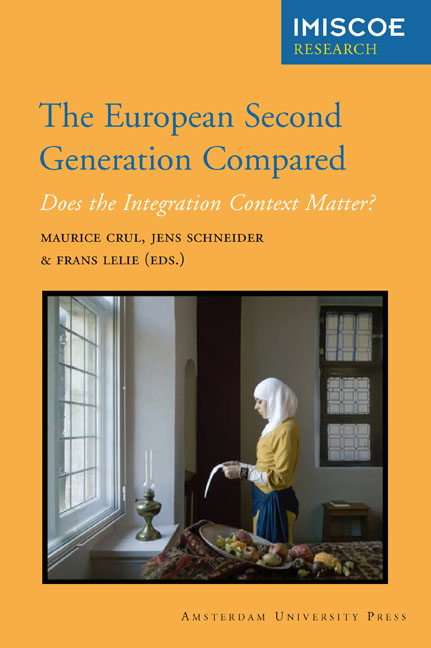Book contents
- Frontmatter
- Contents
- Acknowledgements
- 1 Introduction
- 2 Comparative Integration Context Theory: Participation and Belonging in Diverse European Cities
- 3 Research Methodology
- 4 The TIES Respondents and their Parents: Background Socio-Demographic Characteristics
- 5 School Careers Of Second-Generation Youth in Europe: Which Education Systems Provide the best Chances for Success?
- 6 Assessing the Labour Market Position and Its Determinants for the Second Generation
- 7 Union Formation and Partner Choice
- 8 Identities: Urban Belonging and Intercultural Relations
- 9 Ways of ‘being Muslim’: Religious Identities of Second-Generation Turks
- 10 Conclusions and Implications: The Integration Context Matters
- List of Contributors
- Other IMISCOE titles
7 - Union Formation and Partner Choice
Published online by Cambridge University Press: 09 January 2021
- Frontmatter
- Contents
- Acknowledgements
- 1 Introduction
- 2 Comparative Integration Context Theory: Participation and Belonging in Diverse European Cities
- 3 Research Methodology
- 4 The TIES Respondents and their Parents: Background Socio-Demographic Characteristics
- 5 School Careers Of Second-Generation Youth in Europe: Which Education Systems Provide the best Chances for Success?
- 6 Assessing the Labour Market Position and Its Determinants for the Second Generation
- 7 Union Formation and Partner Choice
- 8 Identities: Urban Belonging and Intercultural Relations
- 9 Ways of ‘being Muslim’: Religious Identities of Second-Generation Turks
- 10 Conclusions and Implications: The Integration Context Matters
- List of Contributors
- Other IMISCOE titles
Summary
Introduction
Partner choice and union formation are important events in the lives of young adults. The specific choices involved in these events are determined by a range of factors. For example, research indicates that social homogamy plays an important role in partner choice. The timing of union formation is, moreover, strongly correlated with people's educational level and other social background characteristics. At the same time, common social patterns in partner selection and union formation do change over time and in the succession of generations. Two of the most significant changes to occur across Europe in recent decades are a considerable postponement of entry into union and parenthood and the marked decline of formal marriage. On one hand, these changes are linked to rising numbers of people in pursuit of higher education, thus leading to an older average age for completion of the educational career. On the other hand, there has been a widely acknowledged transformation of norms and values vis-à-vis sexuality and marriage. Though such trends vary by country (Sobotka & Toulemon 2008), they are quite well documented for Europe. The transformation first gained visibility in Sweden during the late 1960s, having gradually spread to Western Europe, Southern Europe (Prioux 2006) and, more recently, Eastern Europe (Atkinson & Marlier 2010). Prior research reveals gender differences in union formation behaviour, pointing out how women start unions earlier than men and choose partners who are, on the whole, slightly older than themselves (Kalmijn 2007; Liefbroer & Goldscheider 2006).
Unlike our knowledge about general trends in the European population, data concerning partner choice and union formation patterns among young adults of immigrant origin in Europe is limited. And that is despite – if not a very impetus for – widespread ‘folk’ ideas about immigrants, for example, their large, overly-populating families, their ‘conservative’ family values and their rules for partner choice, specifically for young women. The children of immigrants – a generation born and raised in Europe – find themselves in a clearly different set of circumstances than their parents. These mothers and fathers comprising the first generation came as married couples or by large majority chose a partner from their country of origin upon founding a family.
- Type
- Chapter
- Information
- European Second Generation ComparedDoes the Integration Context Matter?, pp. 225 - 284Publisher: Amsterdam University PressPrint publication year: 2013
- 2
- Cited by



